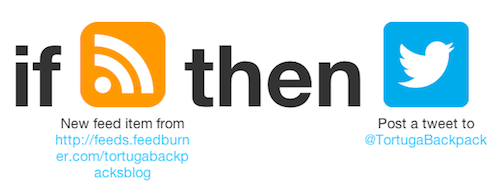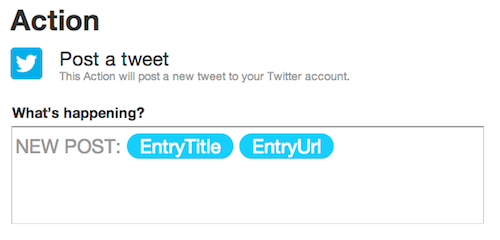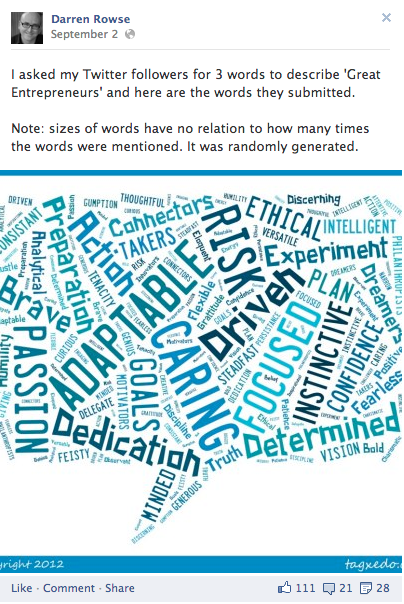“Grow Your Blog Business: The Earn-Millions-in-Your-Flip-Flops Framework [Case Study]” plus 1 more |  |
| Grow Your Blog Business: The Earn-Millions-in-Your-Flip-Flops Framework [Case Study] Posted: 12 Dec 2012 12:01 PM PST This guest post is by Stephan Spencer of The Art of SEO. Former mortgage broker and digital information business expert, Susan Lassiter-Lyons built her business online, and grew it to a six-figure income in only seven months. She attributes her amazing success to a simple framework she developed and perfected over that time. Recently, I met with Susan and she shared with me her "$1 Million digital business blueprint". In this post, I'm going to show you these exact, replicable steps to apply to your business. If you're serious about growing your business online, then you will want to read what she had to say. Although Susan's framework won't make you a million dollars in fifteen minutes like common scams littering the internet, it can show you the simple, proven way to make millions if you put forth the necessary effort. $1 Million digital business blueprintForced to close her real estate business in November 2008 because of the mortgage meltdown, Susan launched her digital information business in January 2009 with a mere $200 in startup capital. Susan's ebook, Mortgage Secrets for Real Estate Investors is where it all started. Published nearly four years ago, it still makes $600-$3,000 a month in online sales. That ebook functioned as a launch point for her business that eventually reached six figures by July 2009. Living by her three-step framework, she is now able to work part-time, with no boss, in flip-flops. Some might call that a dream job. The frameworkNow, let's break down that three-step framework for creating an online business around your passion. Step 1. Create
Step 2. Campaign
Step 3. Convert
Let’s look at each step in detail. CreateBefore you jump right into creating a product, you should first take a moment to identify your expertise. Take an inventory of your knowledge by asking yourself these questions:
The answers to these questions will give you a solid idea about what to cover with your product. Once you have your topic, search Yahoo! Answers for popular FAQs within your subject area. These can form chapters in your book, audio programa, or sections in any of the products you decide to create. Creating a product of your ownThe first obvious option for you to pursue with your info product is to create one of your own. If you feel comfortable enough, you can create an ebook like Susan did, but there are plenty of other options to choose from to suit your specific skills and abilities: you could write a real book, record an audio program, record a video program, host a teleseminar, host a webinar, or host a seminar. The possibilities are endless. Acquiring the rights to an already created info product to sell as your ownMost people don't know this, but there are literally thousands of info products available through private label rights. If you are having trouble creating a product of your own, this is a fast, relatively cheap way to start a digital business. Through websites like NicheEmpires.com you can browse through pages of private label rights products that you can edit and make your own. These PLR products are available for around $67! Why reinvent the wheel if you don't have to? Expanding to a product suiteOnce you have your expertise figured out and entry-level product created, its time to expand that into an entire sales funnel to maximize your potential revenue from customers. There are five elements to a proper product suite. Susan likes to explain these through an example of a golf information product suite.
The most important element of this product suite is the front-end product. Once you have the customer hooked, it becomes exponentially easier to sell them your follow up products. CampaignStart a blog about your topicSusan started her blog, TheInvestorInsights.com. She identified her expertise (in this case, real estate investing) and created a forum where she could post and comment on current events and issues gripping the industry. Through consistent posting she was able to foster a community of active discussions and engaged bloggers who were interested in what she had to say. These bloggers in essence became leads for her informational products, which she was able to effectively sell through this medium. Start a Facebook page about your productWord of mouth is by far the best form of promotion. When somebody likes your product, you want him or her to recommend it to his or her friends. A Facebook page can help you accomplish this. If a person is particularly pleased with your product, they will like your page on Facebook, which will notify their friends. People view the opinions of their friends as much more credible than a traditional sales pitch. Buy some cheap ads on Google to promote your productGoogle offers the most targeted advertisements on the Internet. You can choose from various demographics, including location, and purchase keywords that you believe your target customer is searching for. In addition, Google allows you to operate on a cost per click basis so that you can control your own budget and make sure you aren't spending too much or too little. Ask others in your niche to tell their list about your productIdentify third parties that deal with the same topics as your products. Then offer them a deal that if they will agree to email their subscriber list about your product, you will split the revenue generated with them. For example, you could split the revenue 50/50 with a website that mentions you in their weekly electronic newsletter. How can a company not be excited about this? All they would have to do is mention your website, blog, or product, and they have the potential to generate income. They can't lose. This is definitely a tactic to try. ConvertCreate a simple website that explains the features and benefits of your productCreate a sales page. Make sure it has an intriguing video that explains the features and benefits of your product in a way that inspires the visitor to sign up for your newsletter or buy your product. Offer a simple way for them to buy and download the productUse Clickbank or PayPal to make it easy for the customer to purchase your product in one step. Include an Add to cart button directly under your sales video so the customer can proceed to the checkout without jumping through any hoops. Is it really that simple?Susan Lassiter-Lyons has proven that these steps work. While the framework is simple, as you can see, there’s a lot of work in each step. But if you follow her example, while you may not make six figures in seven months, you will put yourself on a path to similar success. Stephan Spencer is co-author of The Art of SEO (O’Reilly 2009), now in its second edition (March 2012), and author of Google Power Search (O’Reilly 2011). He is the inventor of GravityStream, the automated pay-for-performance natural search technology platform, and the founder of SEO agency Netconcepts. He is a Senior Contributor to Practical Ecommerce and MarketingProfs.com, and a columnist for Search Engine Land and Multichannel Merchant. Originally at: Blog Tips at ProBlogger Grow Your Blog Business: The Earn-Millions-in-Your-Flip-Flops Framework [Case Study] |
| Stop Socializing! Auto-Share Social Media Updates and Get Back to Blogging Posted: 12 Dec 2012 06:02 AM PST This guest post is by Fred Perrotta of Tortuga Backpacks. As a blogger, you should be spending at least 80% of your time creating killer content. The problem is that that leaves just 20% of your time to split between time-intensive (but important) activities like social networking, ad sales, new product creation, and marketing. In this post, you’ll learn how to automatically share your blog posts to your social networks. You’ll set up your system once and then never worry about manually sharing your posts again. Now you can spend your time connecting with likeminded bloggers, responding to comments, and making money instead of copying and pasting the same update all over the web. Your new best friend: IFTTTYour auto-sharing system will use online connections service IFTTT (If This, Then That). You may have heard of IFTTT from previous stories on Problogger, which showed how to use it for content curation and posting to WordPress by email. IFTTT (pronounced like “lift” without the “l”) is a service that creates connections between your social networks, RSS feeds, and even email. With IFTTT, you connect a “trigger” (like a new post in your RSS feed) with an “action” (like posting to Twitter) to create a “recipe”. Read on to learn how to use existing IFTTT recipes to automate your social sharing. Automatically share on TwitterUse this RSS to Twitter recipe to automatically tweet new blog posts. Note that you’ll need to customize this template to use your RSS feed. You can also customize the tweet itself using plain text and “ingredients” like the post title and URL. Automatically share on TumblrIFTTT is even customizable enough to handle Tumblr’s multiple post types. Use this feed to Tumblr link recipe to share a link to your latest blog post on Tumblr. Sharing a link, rather than the full post, is good for your SEO and will prevent duplicate content issues. Run an image-heavy photo blog? Use this RSS to Tumblr photo recipe to create a photo post. Using the templates linked above, you’ll be able to customize the body of your Tumblr post, the source URL, and the tags. Even though you’re not posting directly from Tumblr, you can still utilize all of its functionality. Automatically share on LinkedInLinkedIn sharing works much the same way as Twitter and Tumblr. Use this RSS to LinkedIn recipe to share your next blog post on your LinkedIn profile. Sharing on LinkedIn is highly recommended for B2B bloggers. Why you can’t auto-share on Google+ or Pinterest (yet)Unfortunately, neither Google+ nor Pinterest have a public write API, so IFTTT doesn’t have recipes for posting to either site. For now, you can post updates manually or skip them altogether. Make your own decision based on the importance of these networks to your business and the relevance of their audiences to your blog. The problem with Facebook…Facebook is the hardest network to automate because its EdgeRank algorithm demotes posts made from third-party sites like IFTTT. That’s right: if you’re not creating your posts on Facebook, your fans probably aren’t seeing them. Even when you’re posting on Facebook, only 16% of fans see a given post. Don’t let this number slip even lower! For Facebook, you have two options:
If Facebook drives a significant amount of traffic to your blog, manual posting is worthwhile. The other advantage is that you can post a picture (with a link in the text) rather than just a link. Pictures are prioritized over links (which the plugin above would create), so more of your fans will see a picture post than a link post. Darren himself had 18x better results from posting a picture rather than just a link. Have you automated your social sharing yet?Using the strategies in this post, you can free up most of the time you used to spend sharing every post you published. Even for low-volume blogs, this is huge. Have you automated your social sharing yet? If so, how are you spending your new free time? Fred Perrotta is the co-founder of Tortuga Backpacks and a freelance marketing consultant. Originally at: Blog Tips at ProBlogger Stop Socializing! Auto-Share Social Media Updates and Get Back to Blogging |
| You are subscribed to email updates from @ProBlogger To stop receiving these emails, you may unsubscribe now. | Email delivery powered by Google |
| Google Inc., 20 West Kinzie, Chicago IL USA 60610 | |










.jpg)
0 comments:
Post a Comment